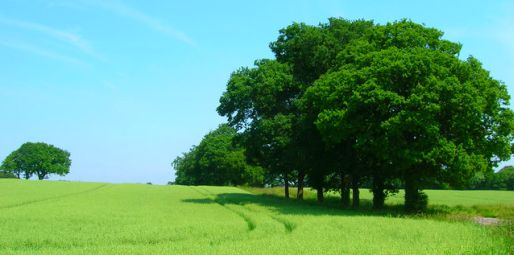
Burgess Hill
The town was a late developer. Until the nineteenth century much of Burgess Hill was agricultural land used for common grazing rights - so sparse was the population that today's downtown Burgess Hill was more commonly known as St John's Common. The common had been the site of a Midsummer Fair since medieval times, although the last fair was held in 1913.
There had been a brick-making industry in the area too since at least the 16th century.
But little more than this.
When the London to Brighton road was turnpiked in 1770, this gave some stimulus to the area.
But like its neighbour and friendly rival Haywards Heath, the key to Burgess Hill's success was the arrival of the London to Brighton Railway in 1841.
The first effect of the railway's arrival in Burgess Hill was to drive much of the livestock auctioning business away from the town, as it was easier to transport sheep and other animals straight to their ultimate markets.
But the railway also catalysed the long-term development of Burgess Hill and by 1880 a town of over four thousand people had sprung up.
After the second world war the development of the Victoria Industrial Estate on the site of the former Victoria Pleasure Gardens (est 1897) gave a huge boost the the economy of Burgess Hill. The 1950s was a time of exceptional growth in the town.
Today Burgess Hill is the home of many large businesses and is a source of much of the wealth of Mid Sussex.
The large range of shops in the town and the excellent Triangle Leisure Centre mean that Burgess Hill is well frequented by residents of many of the villages north of Brighton.
Burgess Hill Attractions
There aren't many obvious visitor attractions in Burgess Hill.Perhaps the most notable old building is Hammonds Place, a beautiful Tudor farmhouse, now engulfed by modern developments which have grown around it - but this is not open to the public.
However, Burgess Hill has plenty of public parkland and countryside nearby and, in Bedelands and Batchelors Farm, the first a nature reserve, the second an open space owned by the Council.
Ditchling Common Country Park is just south east of the town. The Park is a Site of Special Scientific Interest because of its diverse habitat. Ditchling Common is particularly beautiful in the spring when the Bluebells come into bloom.
What's on in Burgess Hill
Find out what's on in and around Burgess Hill and the rest of West Sussex.Comedy, contemporary music, classical music, dance, sculpture and art and the theatre.
Things to do in Burgess Hill
See our listings of things to do in Burgess Hill for details of clubs, societies, hobbies and other interesting things to do.
Burgess Hill sports clubs
Details of all the sports clubs and sports facilities in Burgess Hill .
Map of the Burgess Hill area

- Clayton
- Hurstpierpoint
- Haywards Heath
- Bolney
- Hassocks
- Ansty
- Balcombe
- Cowfold
- Cuckfield
- Ardingly
- Henfield
- Hassocks
- Handcross
- Lindfield
- Borde Hill Gardens
- Arundel
- Bognor Regis
- Chichester
- Crawley
- East Grinstead
- Haywards Heath
- Horsham
- Littlehampton
- Midhurst
- Petworth
- Shoreham-by-Sea
- Steyning
- Worthing

